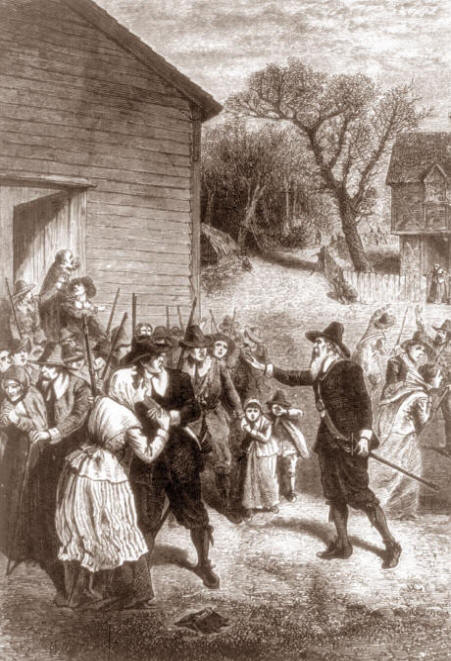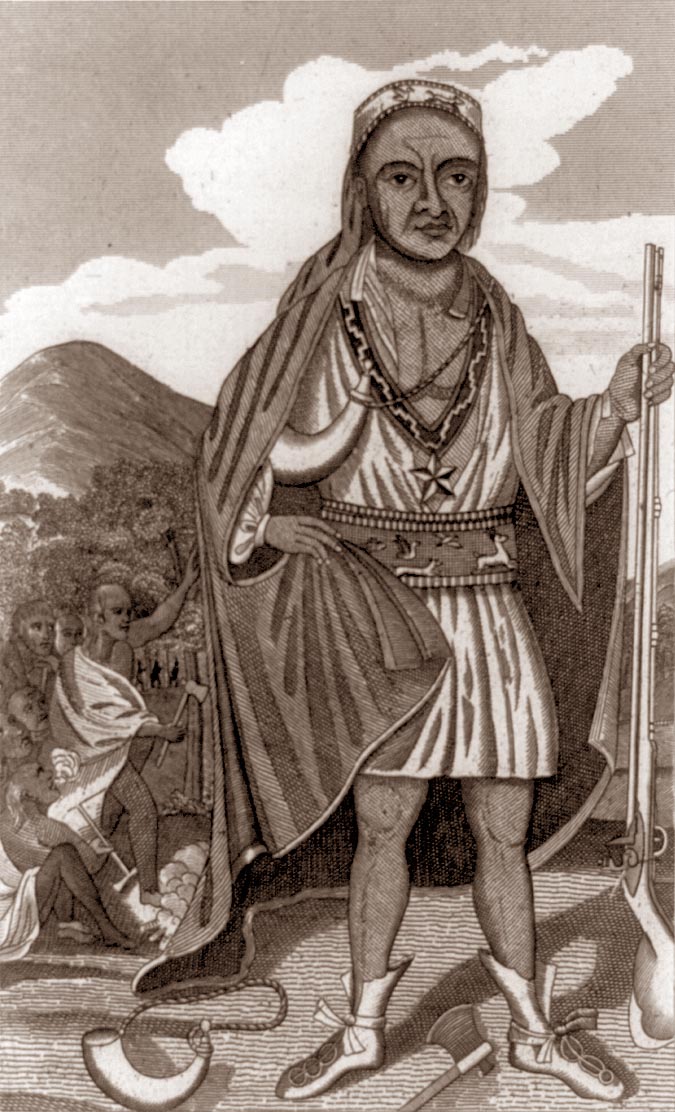King Philip's War
|
|
This Site:
|
Goffe Rallying the Men of Hadley in King Philip's War King Philip's War.—Massasoit kept his treaty of friendship faithfully until his death. Philip assumed the covenants on the death of his father and kept them in- violate many years. As he saw spreading settlements reducing his domains, his hunting-grounds broken up, his fisheries diminished, and his nation menaced with annihilation, his patriotism was so violently aroused that he listened to his warriors, who counselled the extermination of the whites. His capital was at Mount Hope, 300 feet high, not far from the eastern shore of Narraganset Bay. There he reigned over the Pokanokets and Wampanoags, and there he planned a confederacy of several New England tribes, comprising about 5,000 souls. It was done secretly and with great skill. John Sassamon, who had been educated at Harvard, and was a sort of secretary for Philip, betrayed him. Philip sent his women and children to the Narragansets for protection, and proclaimed war. He struck the first blow at Swanzey, July 4, 1675, 35 miles southwest of Plymouth, when the people were just returning from public worship. The surrounding settlements were aroused. The men of Boston, under Major Savage, joined the Plymouth forces, and all pressed towards Mount Hope. Philip had fled to a swamp at Pocasset (Tiverton). There he was besieged many days, but finally escaped and took refuge with the Nipmucks, an interior tribe in Massachusetts, who espoused his cause; and, with 1,500 warriors, Philip hastened towards the settlements in the valley of the Connecticut. Meanwhile, the little colonial army had reached Narraganset and extorted a treaty of friendship from Canonchet, the chief sachem. The news of this discouraged Philip, and he saw that only in energetic action was there hope for him. He aroused other tribes, and attempted a war of extermination by the secret and efficient methods of treachery, ambush, and surprise. It seemed at one time as if the whole European population would be annihilated. Twenty Englishmen sent to treat with the Nipmucks were nearly all treacherously slain (Aug. 12, 1675) near Brookfield, which was burned. September 12, Deerfield was laid in ashes. On the same day Hadley was attacked while the people were worshipping. A venerable-looking man, with white hair and beard, suddenly appeared, with a glittering sword, and led the people to a charge that dispersed the Indians, and then suddenly disappeared (see GOFFE, WILLIAM). Over other settlements the scourge swept mercilessly. Many valiant young men, under Captain Beers, were slain in Northfield (Sept. 23), and others —" the flower of Essex "—under Captain Lathrop, were butchered by 1,000 Indians near Deerfield. Encouraged by these successes, Philip now determined to attack Hatfield, the chief settlement above Springfield. The Springfield Indians joined him, and with 1,000 warriors he fell upon the settlement (Oct. 29) ; but the English being prepared, he was repulsed with great loss.
|
|
|
||
|
|
Site Copyright 2003-2018 Son of the South. For Questions or comments about this collection, contact: paul@sonofthesouth.net |
|
|
Are you Scared and Confused? Read My Snake Story, a story of hope and encouragement, to help you face your fears. |
||

 Alarmed,
he moved towards
Alarmed,
he moved towards